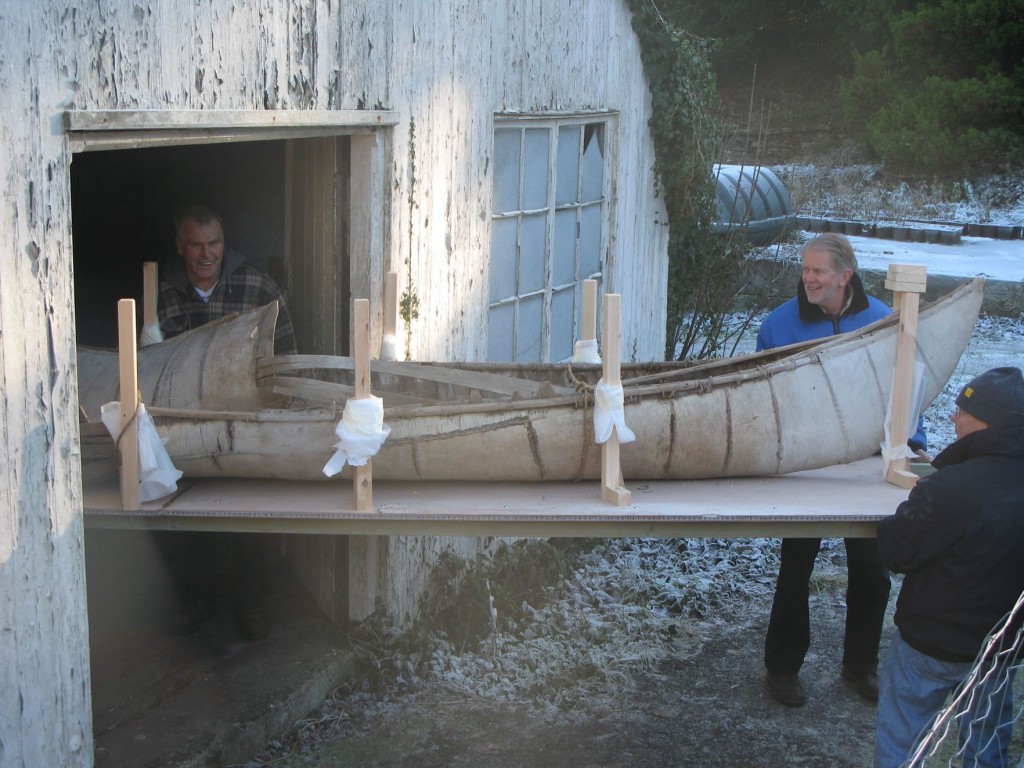 An 18th century birch-bark canoe, thought to be the oldest one still in existence, was found in a shed on the Enys Estate, near Penryn in Cornwall.
An 18th century birch-bark canoe, thought to be the oldest one still in existence, was found in a shed on the Enys Estate, near Penryn in Cornwall.
The canoe was bought in Canada by Lieutenant John Enys (b. 1757, d. 1818), a British soldier with the 29th Regiment who fought in the siege of Quebec during the Revolutionary War. He was deployed in 1770, defended Quebec City in 1776, and was posted to various forts in Upper Canada in the 1780s. He recounted in his journals traveling around eastern Canada after the military campaigns wound down, which is probably where he bought the canoe.
Canoes were popular souvenirs for British visitors to Canada, but they were usually smaller so they could be easily transported home and displayed. This one is full size. Jeremy Ward, curator at the Canadian Canoe Museum in Peterborough, Ontario, believes that it was the work of a Maliseet First Nations tribe who lived in the Maine and New Brunswick area during the Revolutionary era.
He hasn’t had a chance to inspect it in person yet, though. When Enys’ descendants found it among discarded toilets and other junk in the shed, they called the National Maritime Museum to find out what exactly they had.
Estimated to be almost 250 years old, the boat was found in two pieces, but has weathered time well, according to Mr. Ward.
“It’s a beautiful boat, except for the midsection, which looks like it’s been hit by a snowplow,” he said.
What caused the damage is unclear, but Mr. Ward said it does not appear to have happened recently.
Birch-bark canoes from this era were held together by tree root lashings, he said, the hull almost spring-loaded against itself.
“When the lashings come apart, the whole thing comes undone, so it’s very hard for them to live over 150 years, certainly if any weather’s getting at it,” he said.
They were also so common in Canada that few people bothered to keep them. It’s not entirely surprising, therefore, that this treasure was found in the UK where it was treated as a cherished memento rather than used and discarded.
The canoe is currently on display at the National Maritime Museum. They’re working on shoring it up and preserving it with a very light hand so that next year it can be transported back to Canada. When the Enys family learned about the Canadian Canoe Museum and their extensive collection of 600 historical canoes, they decided to donate theirs to the museum where it will be welcomed with some pomp and much excitement in the fall of 2011.
Ward and his colleagues are exploring a variety of restoration and display options. Right now they’re thinking they won’t try to put humpty dumpty back together again, but will instead build a structure that will keep the canoe looking like it’s in one piece.

Beauty, eh?
I knew the hoser would comment on this one.
A little bit of Bondo and some paint and she’ll be back on the highway in no time!
Or at least the go-cart track.
WOW nice find wish i had something like that in my shed 😉